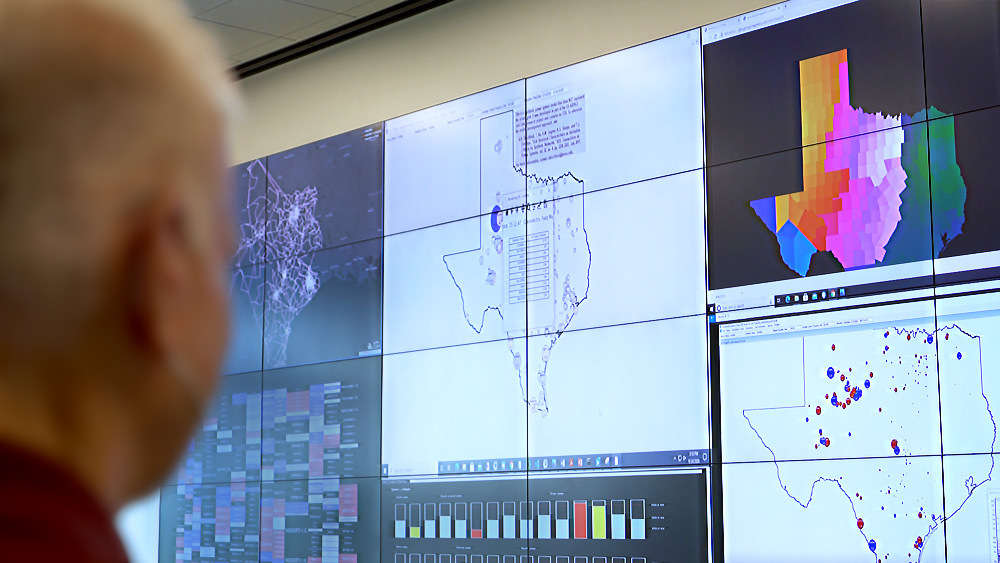
In 1989, a geomagnetic disturbance (GMD) event in Quebec left six million people without power for nine hours. The disturbance caused seven of the electrical devices used to regulate voltage in the grid, the static VAR compensators, to be tripped within 59 seconds, causing a voltage collapse 25 seconds later. GMD events continue to occur and, when they do, can wreak havoc on the power grid. Texas A&M University researchers have created a network to help solve this problem.
With funding from the Governor’s University Research Initiative (GURI) grant, Dr. Thomas Overbye, professor and O'Donnell Foundation Chair III in the Department of Electrical and Computer Engineering at Texas A&M, led the installation of the first closely spaced magnetometer network in the country – the Texas Magnetometer Network.
A magnetometer is a device installed in the ground that is used to measure the Earth’s magnetic field at a particular location. The magnetometer outputs can be used by the electric power industry to better manage GMD events, which are caused by solar flares ejected from the surface of the sun. These GMDs can cause geomagnetically induced currents (GICs) in the grid that could result in voltage collapses and transformer damage, leaving many without power.
This new magnetometer network is a wonderful resource for Texas and the rest of our country. We’re very much looking forward to getting this data out to industry to help them improve the resiliency of the electric grid.
Other magnetometers being used in the U.S. are scattered throughout the country, often thousands of miles apart. The Texas Magnetometer Network contains six magnetometers, all in the state of Texas. Overbye, who is also the director of the Smart Grid Center at Texas A&M, is working closely with associate research engineer Komal Shetye to analyze the data and use that to better understand these types of events. The ultimate goal is to lessen the impact of these dangerous occurrences.
Data is captured every second allowing for the potential to better understand changes in the grid affected by GMDs and GICs. Analyzing the data received from the magnetometers is the first step to understanding the events themselves and can help Overbye’s team recreate past events and do post-event analyses. In addition, the real data captured by the magnetometers allows the team to validate their grid simulations and subsequent research.
Being in closer proximity to one another than most magnetometers allows the team to gather information that is simply not available with others that are dispersed farther apart.
“Having such closely spaced arrays is kind of rare, especially in the U.S.,” Shetye said. “The benefit of having closely spaced arrays is that there is information we are getting, which is currently missing from these that are currently distributed around the country. For example, we can study any low-grade differences or any field intensifications, which has also been a concern of the research community.”
The installation of all six magnetometers was completed in December 2019. Overbye and Shetye’s next steps will be to partner with power grid operators and utility companies to analyze the data and ultimately improve the state of Texas’ power grid.
“This new magnetometer network is a wonderful resource for Texas and the rest of our country,” Overbye said. “We’re very much looking forward to getting this data out to industry to help them improve the resiliency of the electric grid.”